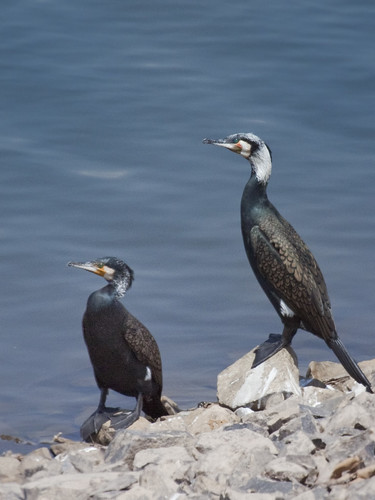
Currently IUCN Red list classifies the conservation status of the Great Cormorant, Phalacrocorax carbo, as of Least concern. However it was not so always
Many fishermen see in the Great Cormorant a competitor for fish. Because of this it was nearly hunted to extinction in the past. Thanks to conservation efforts its numbers increased. At the moment there are about 1,2 million birds in Europe (based on winter counts. Late summer counts would show higher numbers). Increasing populations have once again brought the cormorant into conflict with fisheries. For example, in Britain, where inland breeding was once uncommon, there are now increasing numbers of birds breeding inland, and many inland fish farms and fisheries now claim to be suffering high losses due to these birds. In the UK each year some licences are issued to shoot specified numbers of cormorants in order to help reduce predation, it is however still illegal to kill a bird without such a licence.
Now with claims of huge losses by the will the indiscriminate killing being again? Will the Great Cormorant be again fighting for survival? I sincerely hope not!!
As interesting side note the human relationship with Cormorants is varied. Chinese fishermen sometimes tie fishing line around the throats of cormorants, tight enough to prevent swallowing, and deploy them from small boats. The cormorants “eat” fish without being able to fully swallow them, and the fishermen are able to retrieve the fish simply by forcing open the cormorants’ mouths, apparently engaging the regurgitation reflex. This traditional fishing method is known as Cormorant fishing.
In Norway cormorants is a traditional game bird. Each year 10,000 cormorants are shot to be eaten. In North Norway, cormorants are traditionally seen as semi-sacred. It is regarded as good luck to have cormorants gather near your village or settlement. An old legend states that people who die far out at sea, their bodies never recovered, spend eternity on the island Utrøst – which can only occasionally be found by mortals. The inhabitants of Utrøst can only visit their homes in the shape of cormorants.